VAR Features
Capture your Memorable Moments with Canon

Welcome to the exciting world of vlogging in the digital age! It’s a realm where photography enthusiasts can unleash their creativity and share their stories, passions, and perspectives through visually stunning video narratives. If you haven’t joined the vlogging revolution yet, now is the perfect time to dive in and start capturing those memorable moments!
Choosing the right camera is the first step in your vlogging adventure. Take the time to explore online reviews, compare different models, and get hands-on experience at your local stores. Here are five essential tips that will take your vlogging game to new heights:
Embrace Portability and Convenience:
Say hello to pocketable designs! The market offers an impressive array of high-performance, compact cameras that fit perfectly in the palm of your hand. With features that rival larger setups, these lightweight wonders deliver top-notch quality without compromising convenience. Take the Canon PowerShot V10, for example. Its built-in stand ensures stability, and combined with its compact design, gives it an edge over smartphones. Travel light and capture incredible moments effortlessly.

Bring Your Audience Closer with Live Streaming:
Authenticity is the key to connecting with your viewers. Live streaming is the ultimate tool for breaking down barriers and involving your audience in real-time adventures. Let them be a part of your content creation journey and make them feel like rockstars. Don’t hesitate to hit that live button and prepare for an interactive experience like never before.
Add Cinematic Flair with Built-in Filters:
Lights, cameras, filters! Transform your footage into cinematic masterpieces right from the start. Look for a camera equipped with an impressive range of stunning colour filters that add that touch of magic to your shots. With visuals that pop and captivate, you’ll leave your audience in awe.
Embrace the Power of 4K UHD:
When it comes to video quality, don’t settle for anything less than the best. Shoot in glorious 4K UHD and unlock the power of superior clarity and jaw-dropping detail. Even if your final content won’t be in 4K, having that extra resolution gives you the flexibility to zoom in, crop, and create the perfect output. With the Canon PowerShot V10’s exceptional image quality with 4K UHD video capabilities, on par with the PowerShot G7 X, your videos will shine.

Steady Your Shots with Image Stabilization:
Wave goodbye to shaky footage and welcome buttery smooth videos! As a vlogger on the go, capturing crystal-clear shots can be a challenge. But fear not, because image stabilization is here to save the day. Look for a camera equipped with a rock-solid stabilizer that ensures your footage remains sharp, clean, and full of life. With built-in filters, image stabilization, and Wi-Fi/Bluetooth connectivity, the Canon PowerShot V10 is the ultimate tool to unleash your creativity and leave an unforgettable impact.
The Canon PowerShot V10 deserves special attention from vloggers, as it’s tailor-made to meet their needs. With a compact design weighing just 211 grams, a large 1-inch CMOS sensor, built-in high-quality microphones, and a versatile stand, it’s a vlogger’s dream come true. Capture moments in stunning 4K UHD at 29.97/25.00 fps or opt for Full HD at 59.94/50.00 fps. Its ability to capture clear audio in any environment is especially valuable for vloggers, eliminating the frustrations of external noise.
Gear up, unleash your inner superstar, and let the world be amazed by your incredible skills. It’s time to make vlogging magic happen!

Trending
Apple Watch Series 11: Evolution, Not Revolution, But That Matters
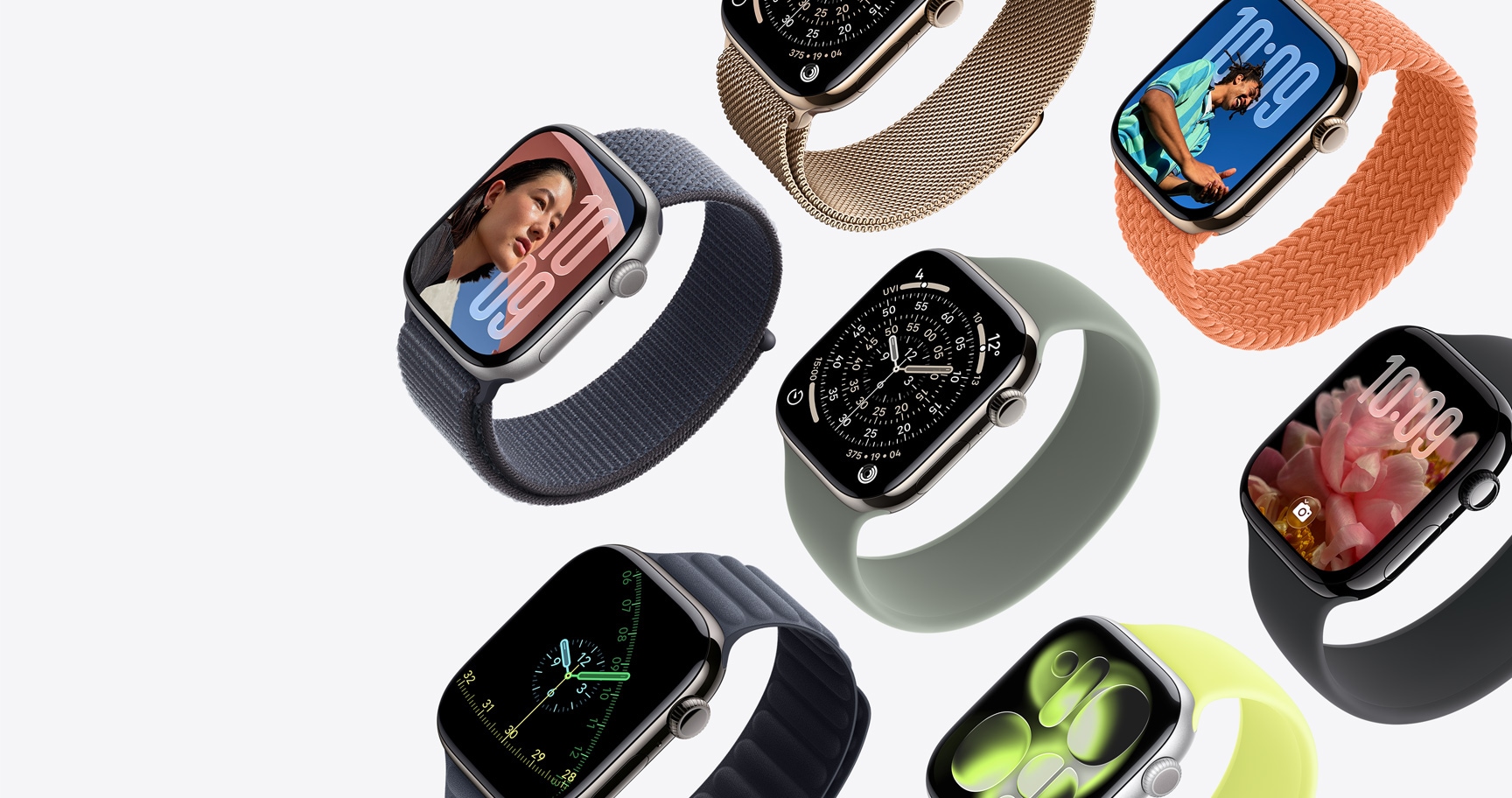
By Srijith KN, Senior Editor
The Apple Watch Series 11 feels familiar on my wrist. It upholds the design philosophy centered on continuous wearability. At a slim depth of 9.7 mm, the profile remains consistent with its immediate predecessor, the Series 10. This lightness is paramount, specifically enabling the device to be worn comfortably 24 hours a day, a requirement for capturing the overnight and long-term health metrics that define this generation.
Same rounded-square silhouette, same slim profile, same 42 mm / 46 mm dial options. But that’s not a complaint, it’s a design that works. What’s changed are the refinements under the glass and behind the scenes that has resulted in a notably improved user experience.
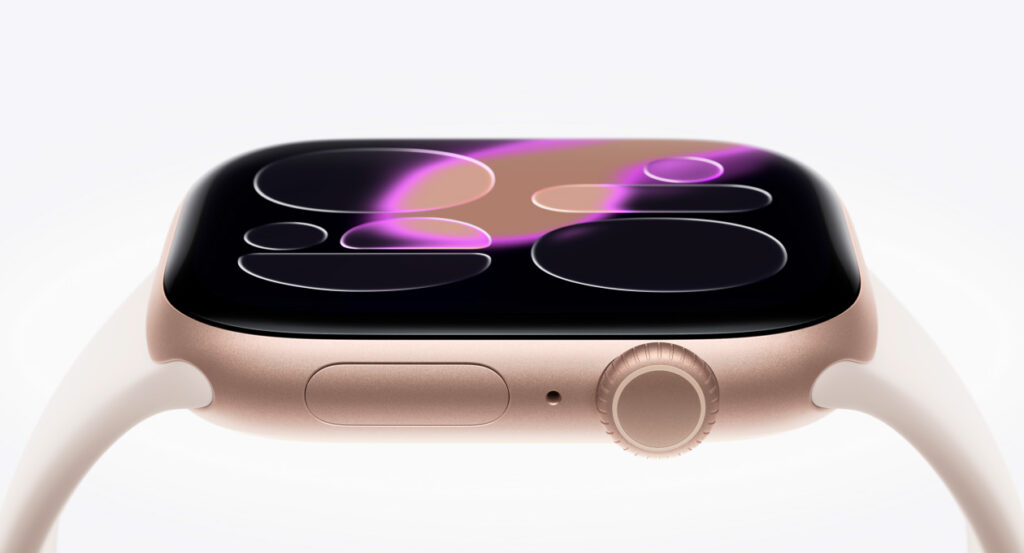
Display & Durability: Subtle But Real
The new release continues to offer a choice between aluminum and the more premium titanium cases, catering to various user preferences for weight and durability. Let me start with what might sound basic, but matters every single day: the display glass.
Apple has treated the Ion-X glass on aluminum models with a new ceramic coating that bonds at the atomic level through physical vapor deposition, making it twice as scratch-resistant as the Series 10. I know that sounds like marketing speak, but here’s why it’s genuinely significant. It’s not just tougher glass; it’s peace of mind. You stop babying your watch and actually use it.
If you opt for the titanium model, you’re getting sapphire crystal instead, the most scratch and crack-resistant material you can put on a watch display. But honestly? The Ion-X glass closes the durability gap considerably, and at a more accessible price point. The Always-On Retina LTPO3 OLED remains, but Apple has pushed it to 2,000 nits brightness, made the display borders 24 percent thinner and improved the viewing angles.
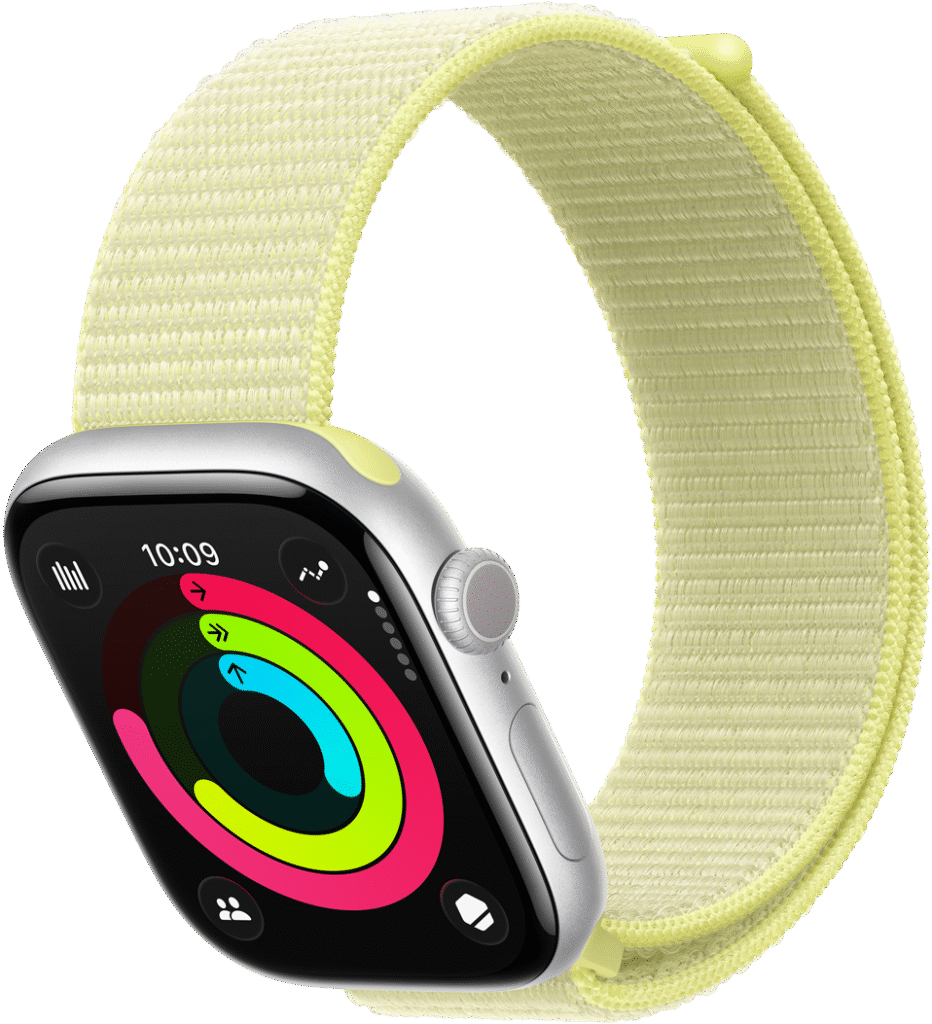
Battery Life: Official Numbers Undersell It
Here’s where Apple deserves genuine credit for listening. The Series 11 now offers up to 24 hours of battery life, a full six hours more than previous generations. My experience, however, suggests Apple’s figures are rather conservative. The larger 46 mm model routinely delivered between 40 and 43 hours of use in testing. It allowed me to get through a full day, track a full night of sleep, and still have a buffer for the next morning. And for a quick top-up, the fast-charge capability gets you to 80% in about 30 minutes, or a brief 5-minute charge provides enough juice for a night’s sleep tracking.
There’s also Low Power Mode, which stretches the battery to an official 38 hours time, which again is a very much conservative claim from Apple. I’m being realistic here, you won’t use it daily unless you’re the type who obsesses over battery percentages. But it’s genuinely useful for specific scenarios: overnight travel, a weekend hiking trip, or when you’re running late and forgot to charge overnight. You lose some fitness features and continuous health monitoring, but the core functionality remains. Although I never needed it, knowing it’s there was reassuring.
Fast charging provides eight hours of battery life in just 15 minutes, so a quick top-up while you shower is all you need. Is it multi-day for a heavy user usage? No. But 24 hours is the sweet spot where the watch becomes genuinely convenient rather than another device demanding consistent attention. And the Low Power Mode is your safety net when life gets unpredictable.
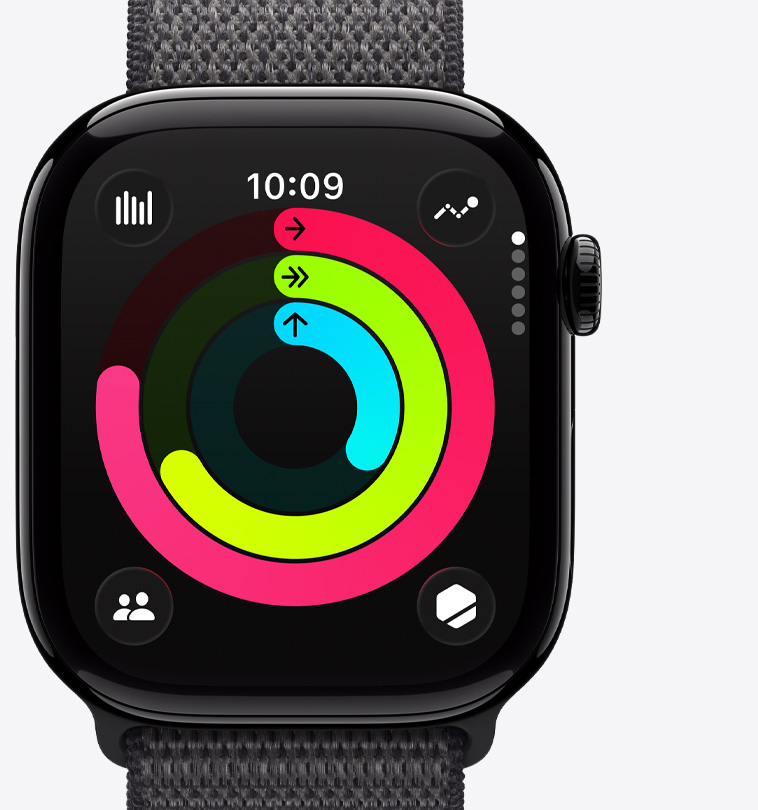
5G: More Than a Spec Bump
I was skeptical about 5G on a watch. How much data are you really downloading on your wrist? Turns out, quite a bit; and the difference is noticeable. The Series 11 features an upgraded cellular antenna covering more bands, and can simultaneously engage both system antennas when needed, significantly increasing signal strength. Translation: music streams without stuttering, and podcast episodes are downloaded in seconds instead of minutes.
The real win is reliability. The dual-antenna system on the Series 11 maintains a connection in places. I travel frequently, and this means stronger, more stable coverage, validating the Watch’s role as an indispensable safety device and a reliable lifeline when I intentionally leave my iPhone behind.
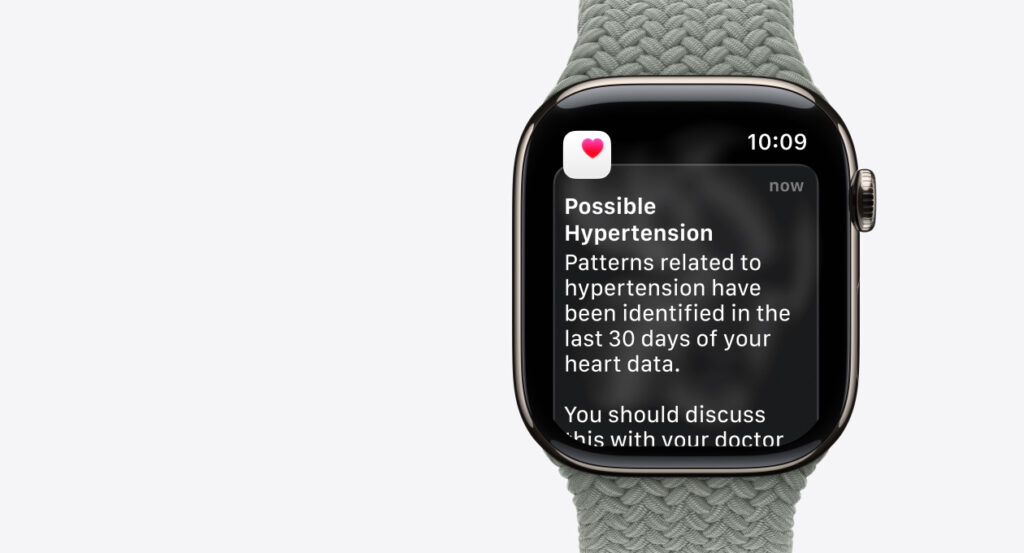
Hypertension Monitoring: A Potential Life-Saver
The Apple Watch uses its optical heart sensor to quietly track how your blood vessels respond to each heartbeat, running an algorithm in the background over 30 days to look for signs of hypertension. I haven’t been wearing it long enough for that full 30-day cycle yet, so I haven’t seen any results. But once it’s had enough data, it’s supposed to alert you if it detects patterns that might point to chronic high blood pressure — basically telling you to double-check with a proper cuff and talk to your doctor.
watchOS 26: The Liquid Glass Era
The software deserves its own recognition. watchOS 26 introduces Liquid Glass, creating a vibrant, expressive experience across the Photos watch face, Smart Stack widgets, notifications, Control Center, and navigation. It’s a visual refresh that makes the watch feel premium and modern.
Two new standout features that I found the most attractive, useful and innovative:
Wrist Flick Gesture: My number one favorite new feature. I’ve come to love the new Wrist Flick gesture. It allows me to instantly dismiss notifications or silence alarms with a quick twist of the wrist. This isn’t a clumsy accelerometer trick; the Neural Engine uses machine learning to interpret “messy motion data” , so it knows the difference between an intentional flick and me just randomly moving my arm.
Smart Stack Hints: Think of them as little nudges from your watch. The right information or app suggestion pops up just when it might be useful. The Series 11 watches your routines, movement, location, and even sensor data, then predicts what you might need before you even ask for it.
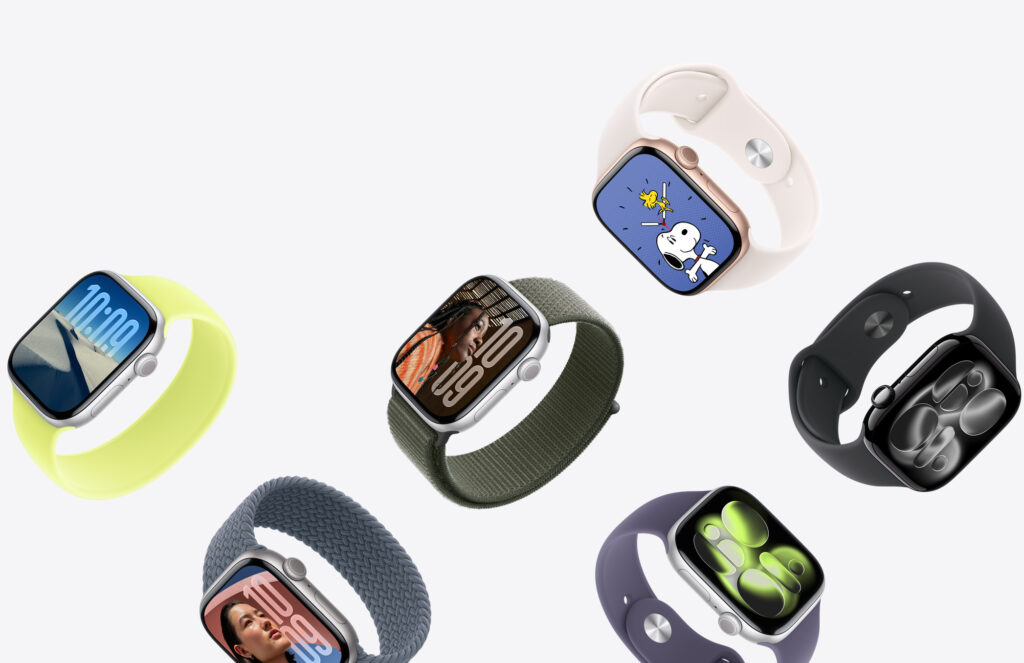
The Ecosystem Advantage: Where Apple Watch Shines Brightest
It’s in day-to-day life that the Series 11 shines. Quick glances at the wrist replace phone-checking rituals. Notifications feel natural rather than disruptive, and built-in GPS means workouts don’t tether you to your iPhone. Cycling, walking, or even scootering, the Watch feels like a personal assistant that anticipates needs without demanding attention.
Should You Buy/Upgrade?
If you own a Series 10: Probably skip it unless 5G and longer battery life address specific pain points for you. The improvements are meaningful but might seem incremental for you.
If you own a Series 6, 7, 8, or 9: This is a substantial upgrade. The display durability, battery life, 5G connectivity, and new health features justify the upgrade; especially if you’re bothered by battery anxiety or accumulated scratches.
If you’re new to Apple Watch: The Series 11 is the most refined, capable, and user-friendly version Apple has made. At 1,599 AED, (the titanium model starts at 2,799 AED) it’s a meaningful investment, that pays dividends daily if you’re already in the Apple ecosystem.
Pricing & Color Options
Aluminum – Available in Space Gray (New), Silver (New), Rose Gold and Jet Black
42 mm (GPS) – AED 1,599 46 mm (GPS) – AED 1,719
42 mm (GPS + Cellular) – AED 1,999 46 mm (GPS + Cellular) – AED 2,119
Titanium – Available in Natural, Gold and Slate
42 mm (GPS + Cellular) – AED 2,799 46 mm (GPS + Cellular) – AED 2,999
VAR
Another iPhone launch—has Apple nailed it with the iPhone Air?
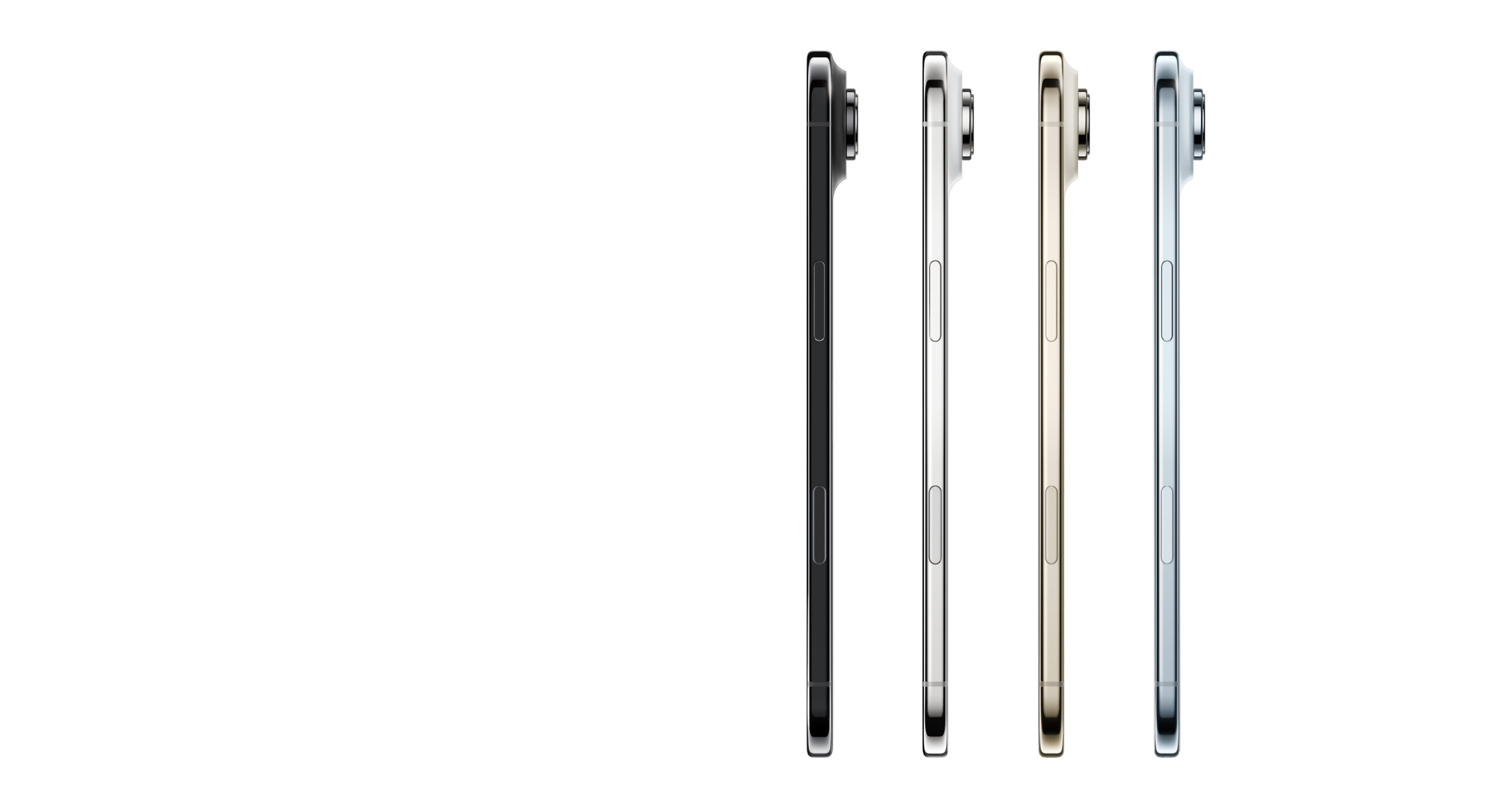
By Srijith KN
The iPhone Air is the talk of the season, and I wouldn’t be surprised if the buzz lasts all year. From the moment I got my hands on it, I’ve been excited. It’s thinner—and that alone makes it a delight to have one! Apple’s past few releases haven’t really excited me, but this design has just clicked! If you look at the journey from the first iPhone to iPhone 6, the devices got thinner with every release. After iPhone 6, Apple started going thicker—and that made sense, since we were in that era where companies were competing to make phones become our primary computers, and they finally succeeded.
The Air has the potential to change that pattern. It brings back the lighter, sleeker feel of the classic old-school phones in a good way without completely sacrificing modernness.
Usability in Daily Life
I’ve been using bigger phones for a while now, and honestly, I’ve even had trouble just pulling them out of my pocket. On top of that, my screen time keeps increasing, and the bigger batteries with all their mAh equations haven’t really helped much. Perhaps that’s why the iPhone Air struck me to put this write-up together. Despite its slim profile, it offers the same battery life as the 16 Pro—which is impressive. Apple claims it’s durable too, thanks to the titanium shell, and I’m willing to bet on that.
Since I’m not a big photographer, I don’t need the massive camera setups. I usually have a cameraman with me for work, so other than snapping a quick photo at the store to check with my wife and some picnic pictures, I really don’t use those big lenses. What I do need is a phone that handles music, calls, and constant calls that keeps my journalism on track—and the Air fits that bracket perfectly.
Performance & Features
The iPhone 17 Air runs on the A19 Pro chip. Heavy gamers probably shouldn’t look elsewhere, but for everyday tasks and anything more than that, it’s flawless. And if you pick up the magnetic power battery attachment, perhaps your battery anxiety will be gone as well.
The Pro has its advantages—a bigger camera lens, a larger battery, and a new cooling chamber—but it’s chunky. The Air, on the other hand, strikes a balance between practicality and aesthetics.
The Verdict
Here’s the bottom line: the Air is gorgeous, lightweight, and fun to use. Yes, it’s compromised—a smaller battery, one less camera—but it delivers exactly what it promises. For those who want power and tech-heavy features, the iPhone 17 Pro is the answer. But for anyone who values aesthetics, a minimalist feel, and a premium outlook in a lighter, smaller package, the Air is the smarter choice.
If you’re tired of carrying heavy devices and don’t care about the extra tech YouTubers hype, the iPhone Air 17 makes perfect sense as the Apple device to get right now.
Quick Take Rating
Everyday Usability: ★★★★☆ (4/5)
Design: ★★★★★ (5/5)
Performance: ★★★★☆ (4/5)
Battery Life: ★★★★☆ (4/5)
Camera: ★★★★☆ (4/5)
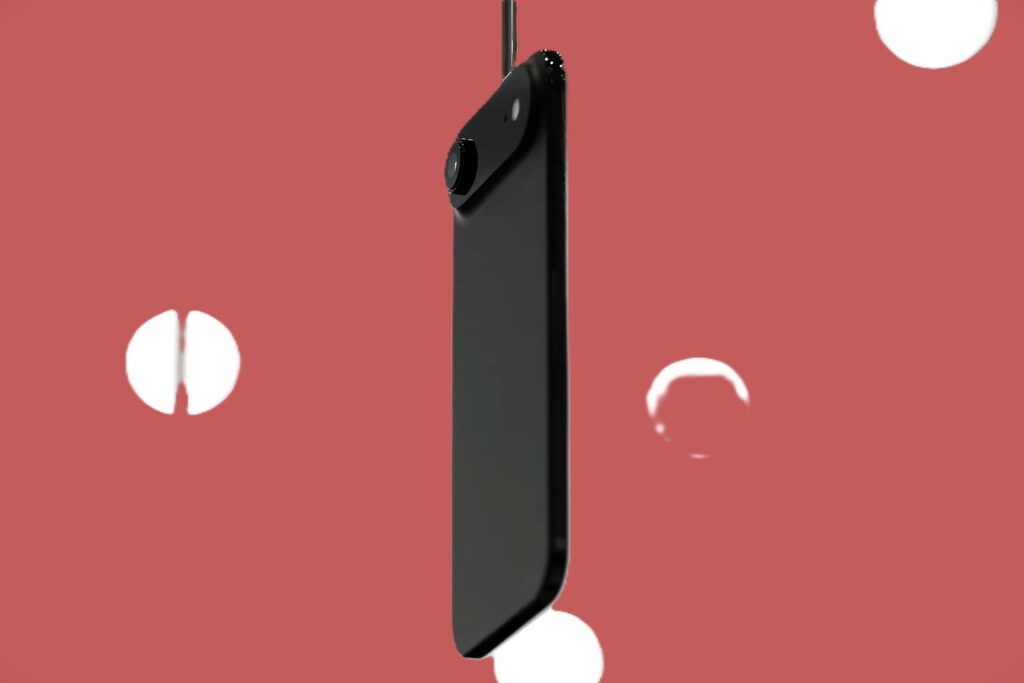
VAR
Samsung Galaxy Z Fold6 vs Google Pixel 9 Pro Fold: Clash Of The Folding Phenoms
Foldables belong to a niche category of the flagship smartphone segment. These cutting-edge, dual-screened gadgets are reserved for the ones willing to spend considerably more than what a regular (still expensive) flagship like the iPhone 15 Pro Max or Samsung Galaxy S24 Ultra costs. The Samsung Galaxy Z Fold6 and Google Pixel 9 Pro Fold are two of the latest and greatest entrants into this elite arena. They are the most advanced embodiments of the foldable smartphone tech, flaunting thinner bodies, larger screens, and sturdier, more efficient hinges. So then, which of these state-of-the-art, futuristic pieces of consumer tech is the best? Moreover, which one would suit your needs the best? Find out in this in-depth Samsung Galaxy Z Fold6 vs Google Pixel 9 Pro Fold comparison.
Samsung Galaxy Z Fold6 — The Trailblazer Of Foldable Smartphones
Ever since its inception, the Samsung Fold series has played a pivotal role in popularizing foldable smartphones. The Galaxy Z Fold6 is the latest heir of this innovative bloodline. The Fold6 sports a squared-off design compared to the more rounded-off aesthetics of its immediate predecessor. Upgrades underneath its skin are incremental and there isn’t much to be super-excited about, except for the new AI features. However, Samsung has strengthened the dual rail hinge of the Fold6 with a more rigid folding edge, which they claim is better at distributing the shock of external impacts. While we see that smartphone hardware is generally evolving at a slower pace, it is actually satisfying to know that Samsung putting in significant effort to make their foldables more durable. While the Fold6 shares all other technological aspects with regular smartphones, including performance and cameras, enhancing and upgrading the foldable components, seems like the right move. On top of that, the more squarish design doesn’t just deliver sleeker aesthetics but also provides a better in-hand feel, thus enhancing the user experience.

Keeping the tech aspects apart, from a user perspective, the Fold6 is the most polished iteration of the Fold series, not simply because it’s the latest but because of the re-proportioning of the design. The cover screen is now slightly wider, and less like a TV remote, and the weight has come down by around 14 grams compared to the Fold5. Another groundbreaking upgrade is on the ingress protection front. While the previous Fold models were limited to only water resistance, the Fold6 offers IP48 dust and water resistance. In simple words, the 4 in the rating ensures that no particles larger than 1 mm can enter the device. As it happens every year, the chipset has been upgraded to the latest in the market. Powering the Fold6 is the best of Android chipsets, the Snapdragon 8 Gen 3. Other than these significant upgrades, the Fold6 mostly matches its predecessor’s hardware components including camera hardware, battery size, and charging speeds.
Google Pixel 9 Pro Fold: The Vanilla Foldable Experience
Software experience is the paramount strong point of any Pixel phone. However, that isn’t only how the first Pixel Fold amazed us. Google’s first foldable was a well-proportionate device in terms of screen real estate. However, these user advantages were overshadowed by some of the disadvantages of the design itself. The Pixel Fold was too bulky to deliver the goodness of the proportionate screen during prolonged usage. On top of that, the original Pixel Fold didn’t open or fold flat, which further took away from the user experience, when compared to the more refined competitor of the time — the Samsung Galaxy Z Fold5. However, for a first-generation foldable, it can undeniably be said that the Pixel Fold was a superlative product.
Recently, Google introduced the successor to the original Fold, along with the Pixel 9 series. Now called the Google Pixel 9 Pro Fold, a name that aligns better with the current flagship lineup, the new folding smartphone is seemingly leaps and bounds ahead of its predecessor. For starters, the new phone is taller and slimmer, while the fluid-friction hinge has been upgraded for increased durability and delivering a satisfying snap when the phone is opened. Both the displays are now larger, delivering a more immersive user experience. The cover screen has grown from a 5.8-inch unit with a peak brightness of 1,550 nits in the previous FOld to a 6.3-inch unit with a peak brightness of 2,700 nits. The larger inner screen of the Pixel Fold measured 7.6 inches diagonally (1,450 nits peak brightness) which is now upgraded to a massive 8-inch unit (2,700 nits peak) in the Pixel 9 Pro Fold.

The Pixel 9 Pro Fold has also gained a superior ultra-wide lens which now features a larger sensor, offering 127 degrees of truly “ultra-wide” coverage. Furthermore, both the front cameras (cover screen and inner screen) have been upgraded to the same 10 mp shooter. On the battery front, it is surprisingly a downgrade from the 4,821 mAh unit of the original Pixel Fold to a 4,650 mAh cell in the 9 Pro Fold. However, as Google is a smartphone company focused primarily on software experience and optimization, we’ll have to test the phone out extensively to determine whether the downsizing has inversely affected the battery life or ended up boosting it. These are the groundbreaking upgrades Google has bestowed upon the Pixel 9 Pro Fold, resulting in an all-encompassing redesign of their foldable. For a second-generation foldable, the Pixel 9 Pro is now up to the mark and capable of competing with the mighty Samsung. However, there is one major drawback, which we will address in the comparison.
Samsung Galaxy Z Fold6 vs Google Pixel 9 Pro Fold: So Then, Which Foldable Triumphs Over The Other?
It’s time for the battle now and firstly, let’s discuss similarities and keep them apart. Both the Samsung Galaxy Z Fold6 and Pixel 9 Pro Fold run Android 14 out of the box and are promised seven major updates. Both feature crisp and bright OLED displays inside out, although of different sizes and specs. Also, both the phones are equipped with three rear cameras each and a total of two front cameras, one on the cover screen and one inside. Now for the differences, I’ll lay them out sector by sector.
The Samsung Galaxy Z Fold6 Is The More Powerful One
Processing power is one of the central factors when it comes to the performance of any smart device or computer, including smartphones. The Samsung Galaxy Z Fold6 is powered by the latest and greatest processor from Qualcomm — the Snapdragon 8 Gen 3. The Pixel 9 Pro Fold on the other hand is invigorated by Google’s in-house Tensor G4 chipset. While both of these powerhouses are built on the 4 nm architecture, the Snapdragon 8 Gen 1 is far superior to the Tensor G4 in terms of sheer processing power and gaming performance.

According to tests conducted by NanoReview, the Snapdragon 8 Gen 3 performs 76% better in floating-point computation and shows up to 55% higher AnTuTu 10 benchmark scores. The 8 Gen 3 also supports 20% higher memory bandwidth (77 against 64 GB/s) and runs on a 6% higher CPU clock speed (3300 Vs 3100 MHz). On paper, the only pro in favor of the Google Tensor G4 over the Snapdragon is its higher GPU frequency (~22%). However, when tested out by NanoReview, the GeekBench compute score of the Adreno 750 GPU in the 8 Gen 3 completely obliterates the Mali-G715 of the Tensor G4. The Adreno 750 scored 14,269, which is around 148% higher than the 5,758 score of the Mali-G715.
This means that regardless of whether it is single-core, multicore, or GPU performance, the 8 Gen 3 is miles ahead of the Tensor G4. We hope the Tensor series to evolve into a more capable and potent chipset as its next iteration, the Tensor G5, is reportedly being built on TSMC’s 3 nm process. But as of now, it is no match to the mighty, Snap-py, Dragon.
The Pixel 9 Pro Fold Takes The Cake For The Software Experience
Google offers arguably the best Android user experience because the OS itself is made by Google in the first place. Hence, the vanilla Android experience provided by Google phones remains unmatched and unaffected by competitors. It is just so pleasantly designed, with the right amount of simplicity and vibrancy. There is absolutely zero bloatware, and it is exceptional to use in both screens of the Pixel 9 Pro Fold. And then there are the clever features Google has reserved for their own phones. These features such as Live Caption, Pixel Studio, Pixel Screenshots Circle To Search, and Now Playing, all contribute to delivering a superior user experience.

Although the latest Galaxy devices including the Fold6 come integrated with AI features, Google is simply better in terms of overall software experience. On top of all that, the latest range of Pixel phones, also offer a bunch of cool new Camera software trickery. The most prominent one is the “Add Me” feature which allows the photographer to be in the photo by combining two consecutive images together. The results of this AI feature are too good to be true, and it is just one example of the Pixel’s impressive software prowess.
Samsung Galaxy Z Fold6 vs Google Pixel 9 Pro Fold: Other Significant Hardware Differences
Apart from the processor, there are some other major hardware changes differentiating these foldables from each other. They are as follows –
Size, Convenience, And Protection: The Lighter One vs The Thinner One
The Samsung Galaxy Flip6 weighs in at 239 g whereas the Pixel 9 Pro Fold is heavier at 257 g. To put that into perspective, the iPhone 15 Pro Max weighs 221 grams, and the S24 Ultra 232 grams. So in comparison, the Flip6 is only marginally heavier, while the Pixel is considerably more hefty, which might affect day-to-day usability. On top of that, the Flip6 offers IP48 dust and water resistance, while the Pixel is limited to IPX4 water resistance. However, the Pixel is thinner and wider, both when folded and unfolded. The Pixel 9 Pro Fold has a thickness of only 10.5 mm when folded, against the 12.1 mm thickness of the Fold6.

Screens: The Pixel Offers More
The cover screens of both these phones measure 6.3 inches, with negligible differences in resolution and pixel density. However, the Pixel 9 Pro Fold has a wider aspect ratio and looks more regular against the longer structure of the Flip6. Similarly, the inner screen of the Pixel 9 Pro Fold is larger, measuring 8 inches diagonally, against the 7.6 inches provided in the Flip6. Both the inner and outer screens of the Pixel also boast a 100 nits higher peak brightness rating of 2700 nits.
Storage: Faster, Larger Storage Options vs Extra RAM
The Samsung Galaxy Z Fold6 offers up to 1 TB of fast UFS 4.0 storage, while the Pixel 9 Pro Fold is capped at 512 GB, that too, slower UFS 3.1. Conversely, the 9 Pro Fold offers up to 16 gigs of RAM, whereas the Flip6 is limited to 12.
Camera: 8K Video Recording vs Better Front Cameras
On the optics front, the Pixel 9 Pro Fold, as mentioned earlier, offers a wider ultra-wide lens — 127-degree coverage against 123 in the Fold6. The Fold6 retaliates by offering 8K video recording when the Pixel is limited to 4K. When it comes to front cameras, the Pixel 9 Pro Fold dominates by offering the same 10 MP camera with autofocus on both its screens. The Samsung, while incorporating a 10 MP camera onto the inner screen, is limited to a 4MP sensor in the cover screen, both of them without autofocus functionality.
Battery: Larger Battery vs Faster Charging
Keeping the Galaxy Fold6 alive is a 4,400 mAh battery pack that supports wired fast charging of up to 25 watts and wireless up to 15 watts. It further offers reverse wireless charging functionality, rated up to 4.5 watts. The Pixel 9 Pro Fold features a larger 4,650 mAh battery pack. However, its wired fast charging wattage hasn’t been revealed by Google yet, but we know that the wireless charging speed is rated at a mere 7.5 watts. Google just mentions “hours of power in minutes of charge with Google 45W USB-C Charger”, although multiple sources mention that the wired charging speed is capped at 21 watts.

Samsung Galaxy Z Fold6 vs Google Pixel 9 Pro Fold: Crowning the Foldable Champion
We have analyzed the specs and features of these two foldables in-depth and we conclude that we would prefer both of these devices; just for different usage styles. It might seem like the usual diplomatic answer, but hear me out. The Samsung Galaxy Z Fold6 is a more performance-oriented device, offering phenomenal processing power compared to the Pixel. The Google Pixel 9 Pro Fold, on the other hand, dominates on the software front with its clever tricks that are not just gimmicks but legitimately usable in daily life. Hence, you will have to make a choice based on your needs, preferences, and aesthetic taste. To help make your decision easier, here’s a simplified list of differentiating factors that set these two impressive foldable phones apart.
| Samsung Galaxy Fold 6 | Google Pixel 9 Pro Fold |
| Lighter | Thinner And Wider |
| Stronger Processor | Vanilla Android Experience |
| Dust Resistance / Ingress Protection | Larger, higher resolution screens with slightly higher brightness |
| Up to 1 TB Of UFS 4.0 Storage | Up to 16 GB RAM |
| Faster Charging Speeds | Larger Battery |
| 8K Video Recording | Higher-resolution front cameras |
-

 Tech News1 year ago
Tech News1 year agoDenodo Bolsters Executive Team by Hiring Christophe Culine as its Chief Revenue Officer
-

 VAR6 months ago
VAR6 months agoMicrosoft Launches New Surface Copilot+ PCs for Business
-

 Tech Interviews2 years ago
Tech Interviews2 years agoNavigating the Cybersecurity Landscape in Hybrid Work Environments
-

 Tech News3 months ago
Tech News3 months agoNothing Launches flagship Nothing Phone (3) and Headphone (1) in theme with the Iconic Museum of the Future in Dubai
-

 Tech News2 years ago
Tech News2 years agoBrighton College Abu Dhabi and Brighton College Al Ain Donate 954 IT Devices in Support of ‘Donate Your Own Device’ Campaign
-

 Editorial11 months ago
Editorial11 months agoCelebrating UAE National Day: A Legacy of Leadership and Technological Innovation
-

 VAR1 year ago
VAR1 year agoSamsung Galaxy Z Fold6 vs Google Pixel 9 Pro Fold: Clash Of The Folding Phenoms
-

 Cover Story8 months ago
Cover Story8 months agoUnifonic Leading the Future of AI-Driven Customer Engagement













